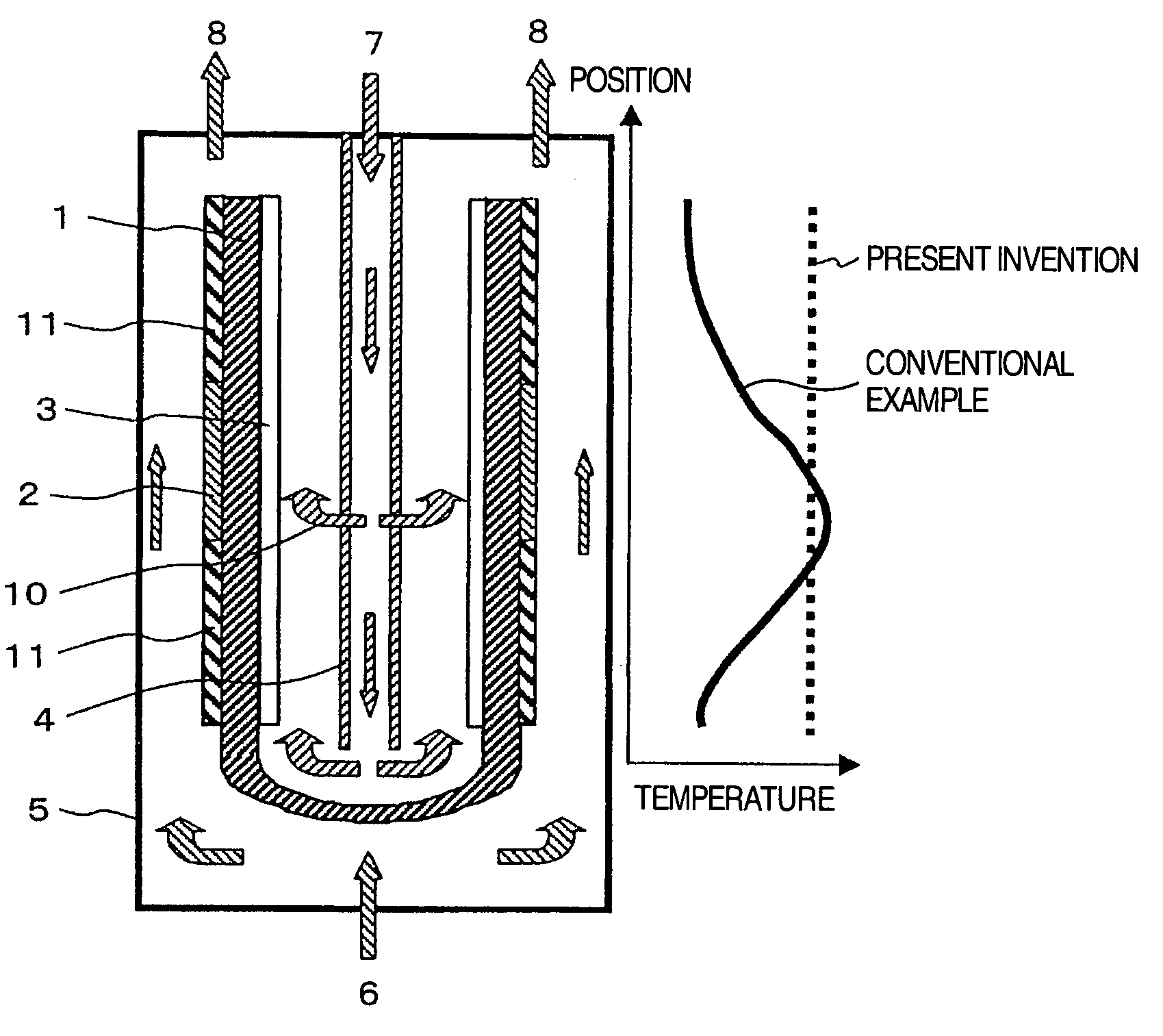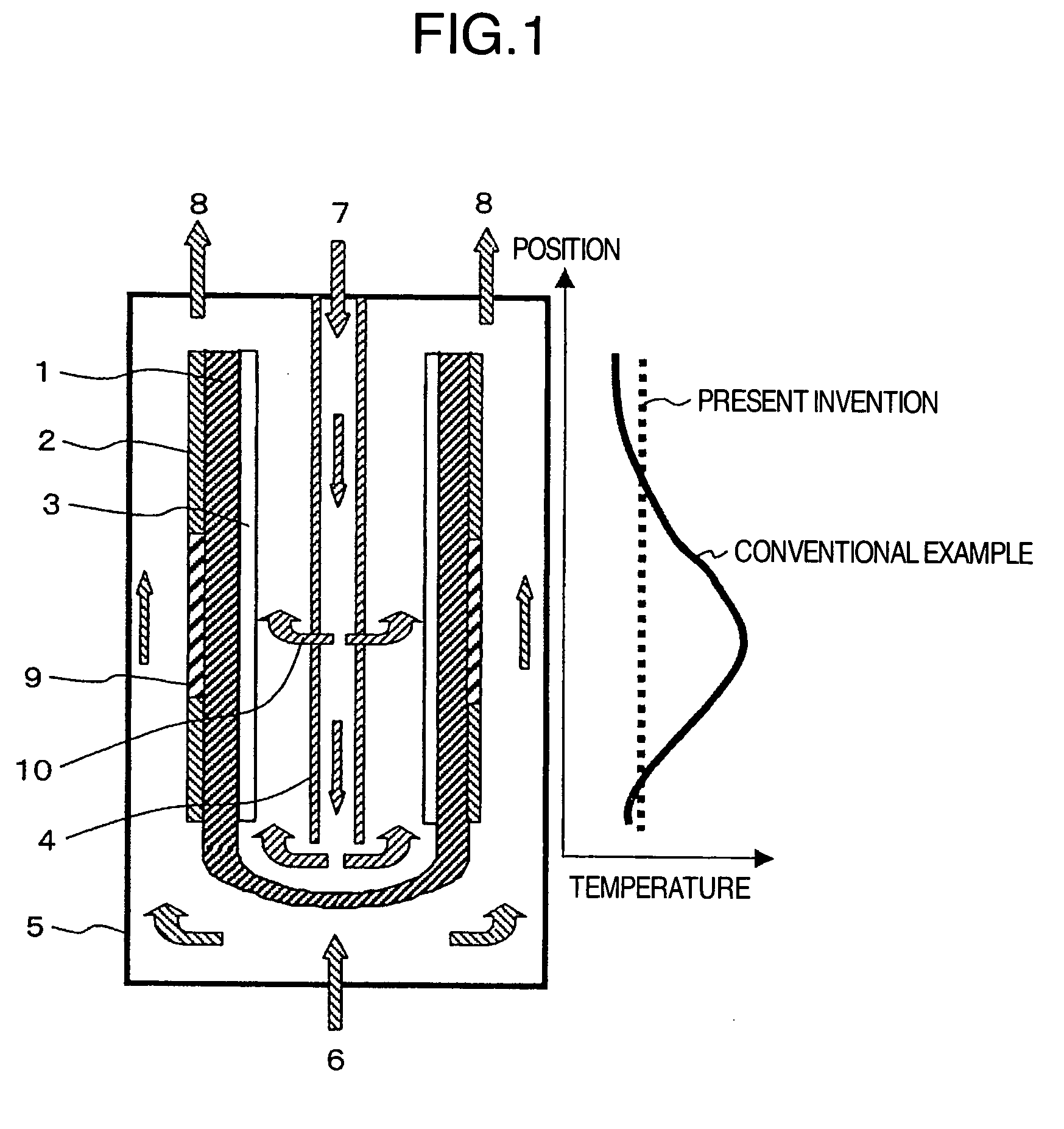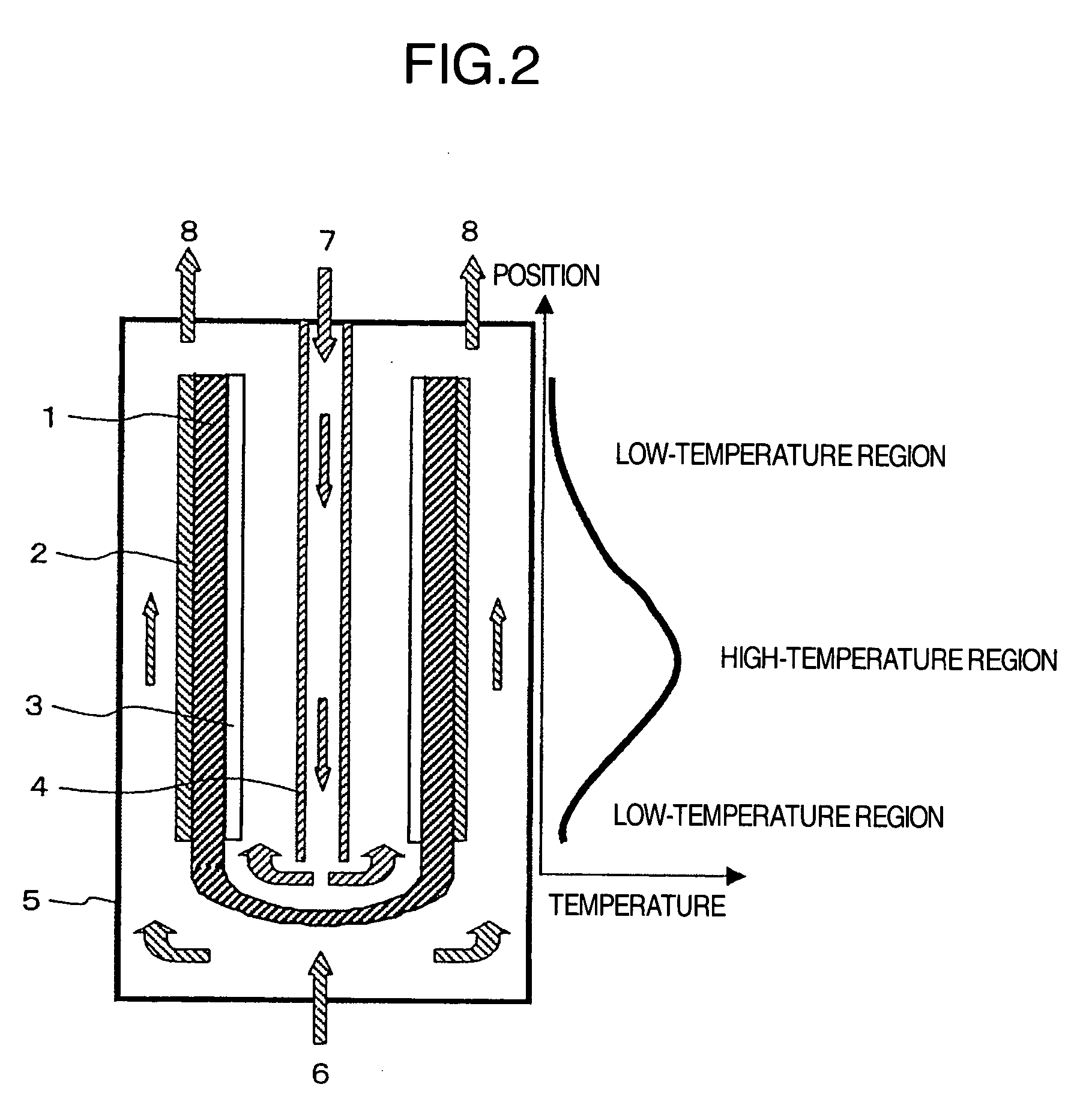Fuel cell
a fuel cell and solid oxide technology, applied in the field of solid oxide fuel cells, can solve the problems of reducing cell performance such as output and efficiency, difficult to maintain the temperature in the cell uniformly, damage to the cell, etc., and achieve the effect of preventing deterioration or corrosion of the cell material and increasing the cell outpu
- Summary
- Abstract
- Description
- Claims
- Application Information
AI Technical Summary
Benefits of technology
Problems solved by technology
Method used
Image
Examples
example 1
[0023]FIG. 1 shows an example in which the present invention is applied to a fuel cell having a tube type solid electrolyte. The fuel cell of this example is provided with the cathode 3 on the inner surface of the tube shaped solid electrolyte 1 and the anode 2 on the outer surface thereof, and is also provided with a reforming catalyst 9 in a high-temperature portion of the cell reaction region of the anode 2. Also, the air introduction tube 4 is provided in the inside space of the tube consisting of the solid electrolyte 1. The air introduction tube 4 is configured so that air is sprayed from two locations: the bottom portion of the tube and a location near the central portion in the axial direction of the electrolyte. As the solid electrolyte, yttrium-stabilized zirconia (YSZ) was used. As the anode 2, porous cermet consisting of nickel and YSZ was used, and as the cathode 3, lanthanum manganite was used. Also, as the reforming catalyst 9, a nickel-lanthanum based catalyst, which...
example 2
[0032]FIG. 3 shows another example of the present invention. In this example, after a combustion catalyst 11 was applied to the low-temperature portions of unit cell, namely, to the anode 2 corresponding to upper and lower positions in the axial direction of the tube shaped solid electrolyte 1, sintering was performed. As the combustion catalyst 11, a palladium-based catalyst can be used.
[0033] The combustion reaction of the combustion catalyst 11 is an exothermic reaction expressed by the following formula (5).
CH4+2O2→CO2+2H2O (5)
[0034] For the unit cell of this example, the combustion catalyst 11 provided in the low-temperature portion of the anode 2 is heated, and thereby the temperatures in the upper and lower portions in the axial direction of the solid electrolyte 1 is increased. Therefore, the temperature distribution in the cell reaction region of anode can be made uniform as a whole in the axial direction of the electrolyte.
[0035] It is a matter of course that the meas...
example 3
[0036]FIG. 4 shows a still another example that is a modification of Example 1. In Example 1 shown FIG. 1, after the reforming catalyst 9 was applied to the anode 2 itself, sintering was performed. In Example 3 shown in FIG. 4, however, the reforming catalyst 9 was plasma sprayed on an electrode 12 provided at the outer periphery of the anode 2 to take out a current of the anode 2. The position at which the reforming catalyst 9 is provided is the same as that in Example 1, namely, a position corresponding to the central portion in the axial direction of the solid electrolyte 1. The function of the reforming catalyst is the same as that of the reforming catalyst shown in FIG. 1.
[0037]FIG. 5 shows a modification of Example 2. In Example 2 shown in FIG. 3, the combustion catalyst 11 was provided on the anode 2 itself. In this modification shown in FIG. 5, however, the combustion catalyst 11 was plasma sprayed on the electrode 12 provided at the outer periphery of the anode 2. The posi...
PUM
| Property | Measurement | Unit |
|---|---|---|
| temperature | aaaaa | aaaaa |
| temperature | aaaaa | aaaaa |
| temperature | aaaaa | aaaaa |
Abstract
Description
Claims
Application Information
 Login to View More
Login to View More - R&D
- Intellectual Property
- Life Sciences
- Materials
- Tech Scout
- Unparalleled Data Quality
- Higher Quality Content
- 60% Fewer Hallucinations
Browse by: Latest US Patents, China's latest patents, Technical Efficacy Thesaurus, Application Domain, Technology Topic, Popular Technical Reports.
© 2025 PatSnap. All rights reserved.Legal|Privacy policy|Modern Slavery Act Transparency Statement|Sitemap|About US| Contact US: help@patsnap.com



